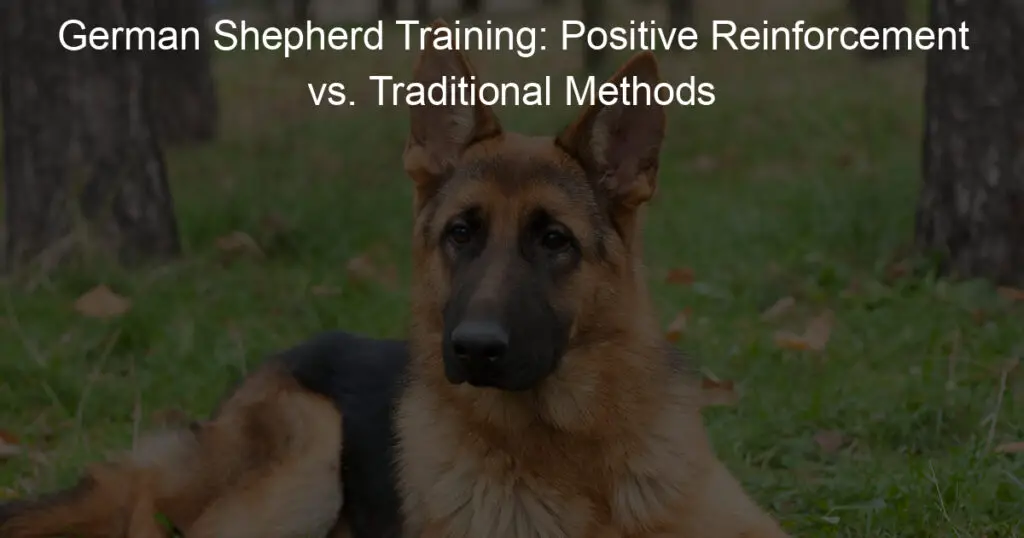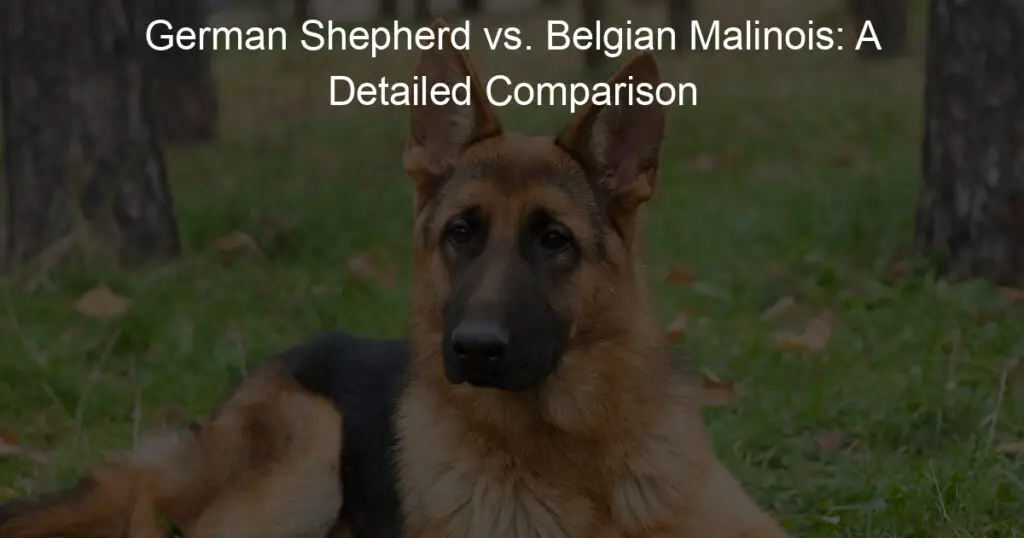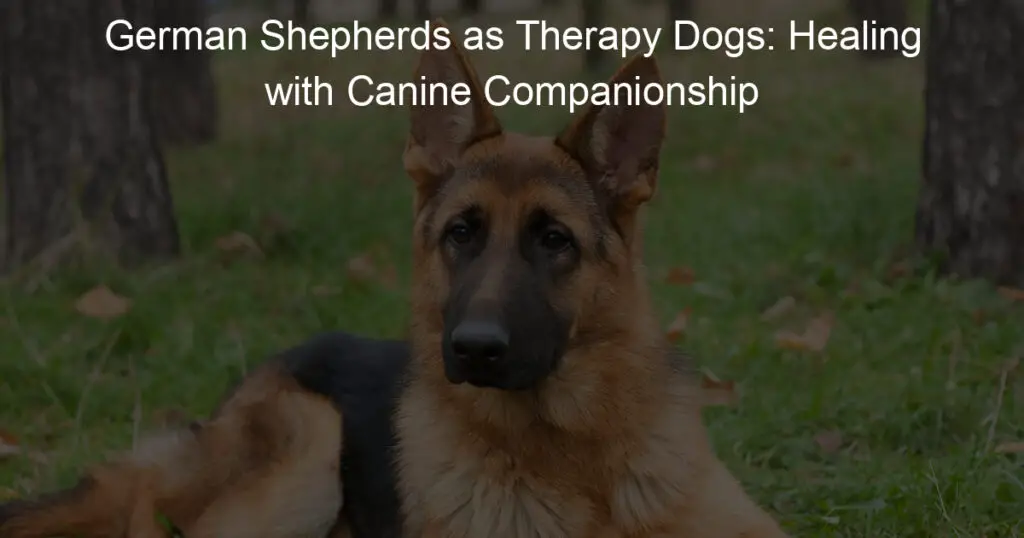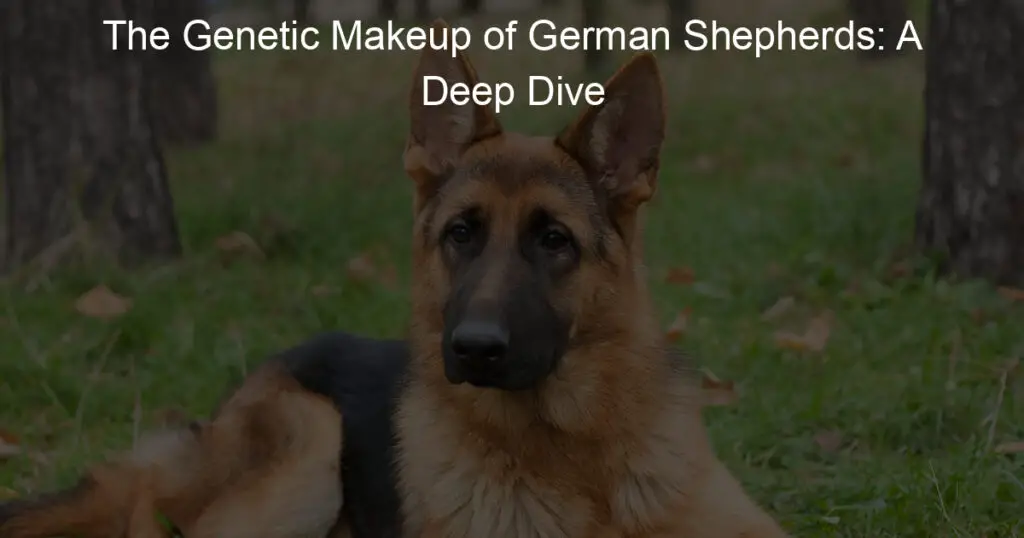In this blogpost, we delve into the world of German Shepherd training, comparing and contrasting the effectiveness of Positive Reinforcement methods with Traditional Methods. With expert insights, practical tips, and key considerations, we aim to provide a comprehensive guide for pet owners navigating the training process.
Understanding German Shepherd Behavior
German Shepherds are a breed known for their intelligence, loyalty, and versatility. To effectively train them, it is crucial to have a deep understanding of their behavior. These dogs were originally bred for herding and guarding purposes, which has shaped their instincts and temperament. German Shepherds are naturally protective and have a strong desire to please their owners. They are highly trainable and thrive on mental stimulation and physical exercise. However, they can also exhibit stubbornness and independent thinking, making consistent training essential.
German Shepherds are known for their keen sense of observation and ability to pick up on cues from their environment. They are highly attuned to their surroundings and can quickly assess situations. This natural instinct makes them excellent candidates for tasks such as search and rescue, police work, and guide dog training. Additionally, German Shepherds have a strong pack mentality and are highly social animals. They thrive on companionship and form strong bonds with their human family members.
It is important to note that German Shepherds, like any other breed, can also display certain behavioral issues if not properly trained and socialized. They may become overly protective or anxious, which can lead to aggression or fear-based behaviors. Understanding their behavior and addressing these issues early on can prevent potential problems and ensure a well-adjusted and happy German Shepherd.
"A dog is the only thing on earth that loves you more than he loves himself." – Josh Billings
This famous quote by Josh Billings perfectly captures the unconditional love and devotion that dogs, including German Shepherds, have for their human companions. Dogs have a unique ability to form deep emotional connections and provide unwavering loyalty. They have an innate capacity to love and care for their owners, often putting their own needs aside in favor of their human's happiness and well-being.
German Shepherds, in particular, are known for their intense loyalty and dedication to their families. They have a strong desire to please and protect their loved ones, making them fiercely loyal and affectionate. They are often referred to as "velcro dogs" because they stick close to their owners, always ready to offer comfort and support.
The bond between a German Shepherd and their owner is special and profound. It is a relationship built on trust, mutual respect, and love. German Shepherds have an uncanny ability to sense their owner's emotions and provide comfort during difficult times. They are intuitive and empathetic, making them excellent therapy dogs and emotional support animals.
There is something truly heartwarming about the love and devotion a dog, especially a German Shepherd, can provide. They offer companionship, loyalty, and unwavering support, no matter the circumstances. Their love is pure and unconditional, and it is a bond that can bring immense joy and fulfillment to both the dog and their owner.
What is Positive Reinforcement?
Positive reinforcement is a training method that focuses on rewarding desired behaviors in dogs rather than punishing unwanted ones. It involves using rewards, such as treats, praise, or play, to reinforce and encourage behaviors that we want to see more of. The basic principle behind positive reinforcement is that when a dog is rewarded for a specific behavior, they are more likely to repeat that behavior in the future.
In positive reinforcement training, the emphasis is on creating a positive and enjoyable learning experience for the dog. The trainer rewards the dog whenever they exhibit the desired behavior, making it clear to the dog what behavior is being reinforced. This method relies on the belief that dogs learn best when they associate good behavior with positive outcomes.
One of the key advantages of positive reinforcement is that it helps to build a strong bond between the dog and the trainer. By using rewards, the trainer reinforces the idea that obeying commands and exhibiting good behavior leads to positive consequences. This creates a positive association in the dog's mind and motivates them to continue learning and behaving well.
Positive reinforcement training is also known for promoting mental stimulation and problem-solving skills in dogs. Instead of relying on force or intimidation, this method encourages dogs to think and make choices. It allows them to actively participate in the learning process and develop their cognitive abilities.
Moreover, positive reinforcement training is considered a humane and ethical approach. It avoids the use of physical punishment or harsh correction methods, which can cause fear, anxiety, and aggression in dogs. Instead, it focuses on positive interactions and rewards to shape and maintain desired behaviors.
Positive Reinforcement: Pros and Cons
Positive reinforcement training has gained popularity among dog owners and trainers for its numerous benefits. However, like any training method, it also has its pros and cons that should be considered.
- 1. Pros of Positive Reinforcement:
One of the major advantages of positive reinforcement training is that it creates a positive and enjoyable experience for both the dog and the trainer. By using rewards, such as treats or praise, dogs are motivated to learn and exhibit desired behaviors. This method strengthens the bond between the dog and the trainer and promotes a harmonious relationship based on trust and cooperation.Another benefit of positive reinforcement is that it is a humane and ethical approach to training. It avoids the use of force, punishment, or aversive techniques that can harm the dog physically and emotionally. Positive reinforcement focuses on rewarding good behavior rather than punishing unwanted behavior, which helps to foster a positive and safe training environment.
Additionally, positive reinforcement training is highly effective in teaching dogs new commands and behaviors. By rewarding desired actions, dogs quickly learn what behaviors are expected of them. This method encourages dogs to think and problem solve, leading to improved learning retention and long-term behavior changes.
- 2. Cons of Positive Reinforcement:
While positive reinforcement is generally a highly effective and preferred training method, it does have some limitations. One challenge is that it may take longer to see results compared to more traditional methods that use punishment or correction. Some dogs may require more time and repetition to understand and consistently perform desired behaviors.Another potential drawback of positive reinforcement is that it may not be effective for all types of training. For certain behaviors or situations that require immediate response or correction, such as safety commands, positive reinforcement alone may not be sufficient. In such cases, a combination of positive reinforcement and other training techniques may be necessary.
Lastly, there is a risk of over-reliance on rewards in positive reinforcement training. Some dogs may become reliant on treats or rewards and may not respond as well once the rewards are gradually phased out. It is important to gradually reduce the dependence on rewards and reinforce behaviors through other means, such as praise or play, to ensure long-term obedience and reliability.
Case Study: Positive Reinforcement in Action
One real-life example of positive reinforcement training in action is the case of Max, a German Shepherd puppy. Max was a playful and energetic pup, but he often displayed destructive behavior, such as chewing on furniture and shoes. His owners, Sarah and Mark, were determined to address this issue using positive reinforcement methods.
They began by identifying alternative behaviors that they wanted Max to engage in instead of destructive chewing. They introduced him to interactive toys and provided him with plenty of appropriate chewing options, such as chew toys and bones. Whenever Max chose to chew on these items instead of furniture or shoes, Sarah and Mark would praise him enthusiastically and reward him with a small treat.
In addition to redirecting Max's chewing behavior, Sarah and Mark also used positive reinforcement to teach him basic obedience commands. They used treats and verbal praise to reward Max whenever he successfully followed commands such as "sit," "stay," and "come." They made sure to provide immediate and consistent rewards to reinforce Max's positive behavior.
Over time, Max began to understand what behaviors were desirable and rewarding. He began to choose appropriate chewing options and respond promptly to obedience commands. Sarah and Mark noticed a significant improvement in Max's behavior and the bond between them grew stronger as a result of positive reinforcement training.
This case study demonstrates the effectiveness of positive reinforcement in shaping a dog's behavior. By reinforcing desired actions with rewards, Max learned to make positive choices and understand what was expected of him. The use of positive reinforcement not only addressed Max's destructive chewing habits but also laid a foundation for ongoing training and future learning opportunities.
What are Traditional Methods?
Traditional methods of dog training, including those used for German Shepherds, have been practiced for many years. These methods typically involve the use of aversive techniques and punishment to discourage unwanted behaviors. Traditional trainers often rely on tools such as choke chains, prong collars, and physical corrections to assert dominance and control over the dog. The aim is to establish the trainer as the "pack leader" and to suppress any undesirable behaviors through punishment. Traditional methods may include techniques like leash corrections, alpha rolls, and verbal reprimands.
While traditional methods may have been widely used in the past, they have come under scrutiny in recent years. Critics argue that these methods can be harsh, fear-inducing, and have the potential to damage the bond between the dog and the trainer. The use of punishment-based techniques may lead to increased stress and anxiety in the dog, potentially resulting in unwanted side effects such as aggression or fear-based behaviors.
It is important to note that traditional methods are not inherently ineffective, and some trainers may still find success using them. However, it is crucial to approach traditional training with caution and ensure that the methods used are humane and do not cause harm or distress to the dog. In recent years, there has been a shift towards more positive and reward-based training methods, which prioritize the use of positive reinforcement to encourage desired behaviors.
Traditional Methods: Pros and Cons
Traditional methods of dog training, including those used for German Shepherds, have both pros and cons to consider. On one hand, traditional methods can be effective in quickly correcting unwanted behaviors and establishing obedience. The use of aversive techniques and punishment may provide immediate results and help establish a clear hierarchy between the trainer and the dog. Traditional methods can also be useful for dogs who are particularly strong-willed or have a high prey drive, as they may respond well to firm and assertive handling.
However, it is important to consider the potential drawbacks of traditional methods. One major concern is the risk of causing physical and emotional harm to the dog. The use of physical corrections and punishment-based techniques can lead to fear, anxiety, and stress, which may have long-lasting effects on the dog's well-being and behavior. Additionally, traditional methods may not promote a positive bond and trust between the trainer and the dog, as they rely on dominance and control rather than mutual understanding and cooperation.
Another disadvantage of traditional methods is that they may not address the underlying causes of the unwanted behaviors. By focusing solely on suppressing the behavior through punishment, the root issues may not be resolved, leading to recurring problems or the manifestation of new unwanted behaviors. Traditional methods also run the risk of teaching the dog to avoid punishment rather than genuinely understanding and learning the desired behavior.
Finally, traditional methods may not take into account the individual needs and personalities of the German Shepherd. Every dog is unique, and what works for one dog may not work for another. Traditional methods may not be suitable for dogs who are sensitive or have a more timid disposition, as they may further exacerbate their anxiety and fear.
Case Study: Traditional Methods in Action
To illustrate the effectiveness of traditional methods in German Shepherd training, let's consider the case of Max, a strong and energetic German Shepherd with a tendency to exhibit aggressive behavior towards other dogs. Max's owner sought the help of a traditional dog trainer who employed correction-based techniques to address this issue.
During training sessions, the trainer used a choke chain collar to correct Max's behavior whenever he lunged or growled at other dogs. The trainer would apply a quick jerk on the leash, causing discomfort and discouraging the unwanted behavior. Over time, Max began to associate his aggressive behavior with the uncomfortable sensation of the collar correction, leading him to suppress his aggressive tendencies.
While Max's aggressive behavior diminished, it became evident that he was displaying signs of stress and anxiety during training sessions. He would cower and avoid eye contact with the trainer, indicating a lack of trust and a fear of the corrective measures. Despite the initial success in reducing Max's aggression, the traditional methods used seemed to have negatively impacted his emotional well-being.
Furthermore, although Max's aggressive behavior was controlled during training sessions, his underlying issues were not fully addressed. When encountering other dogs outside of training, Max's aggression resurfaced, suggesting that the traditional methods focused on suppressing the symptoms rather than resolving the root cause.
Can Positive Reinforcement and Traditional Methods Co-exist?
Positive reinforcement and traditional training methods can co-exist and be used in conjunction with each other to create a comprehensive training approach. By incorporating both techniques, trainers can take advantage of the benefits offered by each method while minimizing their drawbacks.
1. Utilizing Positive Reinforcement as the Foundation:
Positive reinforcement can serve as the foundation of the training approach, focusing on rewarding desired behaviors with treats, praise, or play. This method helps build a strong bond between the dog and trainer, encourages good behavior, and reinforces the desired actions. By using positive reinforcement as a starting point, trainers can establish a solid training base and create a positive learning environment for the German Shepherd.
- 2. Incorporating Traditional Methods for Correction:
Traditional methods can be introduced selectively and judiciously within the training process to address specific behavioral issues that may not respond effectively to positive reinforcement alone. These methods can include the use of corrective tools like leash corrections or verbal corrections to discourage undesirable behaviors. However, it is crucial to ensure that these corrections are administered in a fair, consistent, and humane manner, without causing unnecessary stress or fear to the dog. - 3. Individualized Approach for Each Dog:
It is important to recognize that not all dogs respond the same way to training methods. Some German Shepherds may excel with positive reinforcement alone, while others may require a combination of positive reinforcement and traditional methods. Trainers must assess the temperament, personality, and unique needs of each dog to determine the most appropriate training approach. This individualized approach ensures that the training methods used are tailored to the specific dog, increasing the chances of success and creating a harmonious training experience.
Choosing the Right Training Method: What's Best for Your German Shepherd?
When it comes to selecting the right training method for your German Shepherd, it is important to consider their individual personality, temperament, and learning style. Every dog is unique, and what works for one may not work for another.
First, evaluate your German Shepherd's personality. Are they highly motivated by rewards and praise, or are they more responsive to correction and structure? Understanding their natural tendencies can help guide your decision-making process.
Consider your own training style and preferences as well. Are you comfortable using corrective tools, or do you prefer a more positive and reward-based approach? It's crucial to choose a method that aligns with your values and training philosophy.
Take into account your German Shepherd's specific training needs. Do they require basic obedience training, or do they have specific behavioral issues that need to be addressed? Certain methods may be more effective for specific training goals.
Consulting with a professional dog trainer or behaviorist can provide valuable insights and recommendations. They can assess your German Shepherd's behavior, provide guidance on the most suitable training methods, and help you create a personalized training plan.
Remember, training should be a positive experience for both you and your German Shepherd. It's important to choose a method that fosters a strong bond, builds trust, and promotes a positive learning environment. Adaptability is key – be open to adjusting your approach as needed based on your dog's progress and response to the training methods employed.
How do you feel about your German Shepherd's training?
Training your German Shepherd can be both rewarding and challenging. It's important to take a moment to reflect on how you feel about their progress and the training experience as a whole. Are you proud of their accomplishments and the skills they have learned? Do you feel frustrated or discouraged at times when they struggle to master certain commands? It's normal to experience a range of emotions throughout the training process.
Remember that training takes time and patience. It's important to celebrate the small victories and acknowledge the progress your German Shepherd has made, even if it's not always perfect. Every dog learns at their own pace, and setbacks are a normal part of the learning journey.
If you feel overwhelmed or unsure about your German Shepherd's training, don't hesitate to seek guidance and support. Professional trainers, online resources, and local dog training classes can provide valuable insights and assistance. Sometimes, an objective perspective and expert advice can make a significant difference in your training approach and outcomes.
Additionally, it's essential to maintain a positive mindset and approach training sessions with enthusiasm and consistency. Your German Shepherd can pick up on your emotions, so maintaining a calm and encouraging demeanor can help create a positive and productive training environment.
Overcoming Training Challenges
Training a German Shepherd can present its fair share of challenges, but with the right approach, these obstacles can be overcome. Here are some strategies to help you tackle training challenges head-on:
- 1. Patience and Persistence:
Training can be a gradual process, and it's important to remain patient and persistent. Keep in mind that dogs, including German Shepherds, learn best through repetition and consistency. Stick to a regular training schedule and be prepared to repeat commands and exercises until they are understood and mastered. - 2. Problem-Solving:
Identify any specific challenges or areas where your German Shepherd may be struggling. Is there a particular command that they find difficult? Are there distractions in the training environment that hinder their focus? By pinpointing the problem areas, you can tailor your training approach to address these specific challenges. - 3. Adaptation and Flexibility:
Not all dogs respond to the same training methods, so it's crucial to be flexible and willing to adapt your approach. If your German Shepherd is not responding well to a particular technique, try alternative methods or seek guidance from a professional trainer. Remember, training should be a positive experience for both you and your dog, so don't be afraid to switch things up if needed.It's important to note that training challenges are not a reflection of your German Shepherd's intelligence or ability. Each dog is unique, and some may require more time and effort to grasp certain commands or behaviors. Stay patient, focused, and motivated, and celebrate even the smallest progress.
Continuing Education: Ongoing Training for Your German Shepherd
Ongoing training is essential for your German Shepherd's continued growth and development. As your dog matures, their training needs will evolve, and it's important to provide them with ongoing education to maintain their skills and reinforce positive behaviors. Here are some key aspects to consider when it comes to continuing education for your German Shepherd:
- 1. Advanced Commands and Skills:
Once your German Shepherd has mastered the basic commands, it's time to introduce more advanced skills. Teach them commands like "stay," "leave it," or "heel" to enhance their obedience and control. These advanced commands not only improve their behavior but also provide mental stimulation and challenge. - 2. Socialization and Behavior Management:
Socialization is an ongoing process that should continue throughout your German Shepherd's life. Expose them to different environments, people, and other animals to ensure they remain well-rounded and friendly. Additionally, continue to reinforce good behavior and address any behavioral issues that may arise. Seek professional help if needed to address specific challenges. - 3. Enrichment Activities:
German Shepherds are intelligent and active dogs that thrive on mental and physical stimulation. Engage them in stimulating activities such as puzzle toys, obedience competitions, agility training, or scent work. These activities not only provide mental challenges but also give them an outlet for their energy and help prevent boredom-related behaviors.Remember, ongoing training should always be conducted using positive reinforcement methods. Continue to reward and praise your German Shepherd for their successes, as this will maintain their enthusiasm and motivation to learn. Consistency and patience are key during this stage, as it may take time for your dog to grasp new skills or concepts.
German Shepherd Training Methods:
| Method | Description | Pros | Cons |
|---|---|---|---|
| Positive Reinforcement | Reinforces desired behavior with rewards such as treats, toys, and verbal praise | Encourages desired behavior without fear or aggression | Can be time-consuming |
| Traditional | Uses verbal corrections, physical discipline, and punishment | May be more effective in some cases | Can cause fear and aggression |
| Clicker Training | Uses positive reinforcement with a clicker and treats to train the dog | Creates a positive relationship between dog and owner | Can be difficult to master |
| Play Training | Uses playtime to reward good behavior and reinforce commands | Encourages creativity and fun | Can reinforce bad habits |
While both Positive Reinforcement and Traditional Methods have their merits and drawbacks, it is important to remember that every German Shepherd is unique. Hence, a combination of both approaches, tailored to your pet's unique needs and personality, may yield the best results. Always remember, the ultimate goal is a happy, well-adjusted, and obedient German Shepherd.















